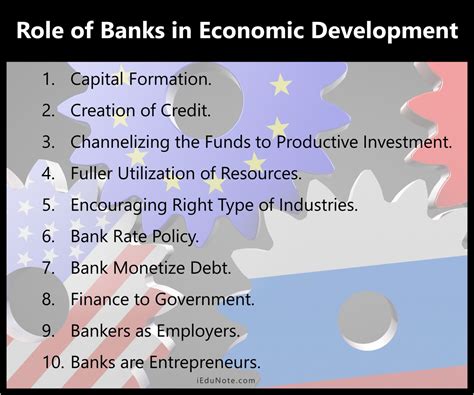Opinion: The Role of Central Banks in Modern Economies

Explore the central bank’s function, evolution, impact of monetary policy, inflation regulation, and interest rate influence for a deeper understanding of economic stability.Central banks play a crucial role in modern economies, yet their functions and influence are often misunderstood by the general public. In this blog post, we will explore the key aspects of the central bank’s role and how it has evolved over time to become a cornerstone of economic stability. From understanding the central bank’s primary function to the impact of monetary policy on economic stability and its role in regulating inflation, we will delve into the complexities of central bank operations. Additionally, we will examine how central banks wield their influence on interest rates, affecting everything from borrowing costs to investment decisions. By the end of this post, readers will have a clearer understanding of the pivotal role central banks play in shaping our modern economies.
Understanding the central bank’s primary function
One of the primary functions of a central bank is to control and regulate the money supply in an economy. This involves the central bank monitoring and managing the availability of money and credit to ensure stability and growth. By adjusting interest rates and implementing monetary policies, central banks aim to control inflation, stimulate economic growth, and maintain a stable and healthy financial system.
Another important role of central banks is to act as the banker for the government and commercial banks. They provide financial services such as holding deposits, managing government accounts, and facilitating transactions between financial institutions. By performing these functions, central banks play a crucial role in ensuring the smooth operation of the overall financial system.
Furthermore, central banks often act as the lender of last resort during times of financial crisis. This means that they provide emergency funding to troubled banks and financial institutions to prevent widespread panic and instability in the financial markets. By acting as a source of liquidity and stability, central banks help to maintain confidence in the financial system and prevent systemic failures.
Evolution of central bank’s role in economies
In the early days of modern economies, central banks were primarily responsible for issuing currency and maintaining the stability of the financial system. However, as economies have evolved, so too has the role of central banks. They now play a much larger role in controlling the money supply, regulating interest rates, and influencing economic policy.
Central banks have also taken on a more active role in ensuring financial stability and managing systemic risks. This evolution has been driven by the increasing complexity and interconnectedness of modern financial markets, as well as the need to adapt to changing economic conditions and maintain stability in the face of global challenges.
Overall, the evolution of central bank’s role in economies reflects their growing importance in shaping economic policy and maintaining stability in an increasingly interconnected world.
Impact of monetary policy on economic stability
Monetary policy plays a crucial role in maintaining economic stability. The central bank’s control over the money supply, interest rates, and credit conditions has a direct impact on the overall health of the economy. By adjusting these levers, the central bank can influence consumer spending, investment, and borrowing, which in turn affects the levels of inflation, unemployment, and overall economic growth.
One of the primary tools of monetary policy is the setting of interest rates. By raising or lowering the benchmark interest rate, the central bank can control the cost of borrowing for businesses and individuals, which in turn can influence spending and investment levels. This can have a significant impact on economic stability, as higher interest rates can slow down economic activity and lower inflation, while lower interest rates can stimulate growth and increase inflation.
Furthermore, the central bank’s management of the money supply and credit conditions can also affect economic stability. By regulating the availability of credit and the amount of money in circulation, the central bank can influence the overall level of economic activity. Tightening the money supply can lead to higher interest rates and reduced borrowing, which can cool down an overheated economy, while loosening the money supply can stimulate economic activity during a recession.
The central bank’s role in regulating inflation
One of the primary functions of a central bank is to regulate inflation within an economy. Inflation occurs when the general price level of goods and services in an economy increases, resulting in a decrease in the purchasing power of a nation’s currency. When inflation is too high, it can lead to negative consequences such as reduced consumer spending, decreased investment, and an overall slowdown in economic growth. Central banks play a crucial role in regulating inflation by implementing various monetary policies and tools to control the money supply and interest rates.
By utilizing tools such as open market operations, reserve requirements, and discount rates, the central bank can influence the amount of money circulating in the economy. When inflation becomes a concern, the central bank may implement contractionary monetary policies to reduce the supply of money, thus helping to curb inflationary pressures. On the other hand, during times of deflation or economic downturn, the central bank may employ expansionary monetary policies to increase the money supply, stimulating economic activity and promoting price stability.
Furthermore, central banks also utilize inflation-targeting frameworks to set specific inflation targets and adjust their monetary policies accordingly. By maintaining a stable and predictable inflation rate, central banks can help businesses and individuals make better financial decisions, leading to overall economic stability and growth. In summary, the central bank’s role in regulating inflation is essential for maintaining a healthy and sustainable economy, and their proactive measures play a vital role in ensuring price stability and overall economic well-being.
Central bank’s influence on interest rates
Interest rates are a critical component of a country’s economic stability, and the central bank plays a significant role in influencing them. The central bank has the power to set the benchmark interest rate, which serves as a guide for other lending rates in the economy. By adjusting this rate, the central bank can effectively control the cost of borrowing and lending, thereby influencing overall spending and investment in the economy.
Furthermore, the central bank’s influence on interest rates extends to its ability to use open market operations to buy and sell government securities. By doing so, the central bank can affect the money supply in the economy, which in turn impacts interest rates. For example, if the central bank sells securities, it reduces the money supply, causing interest rates to rise. Conversely, buying securities increases the money supply, leading to lower interest rates.
In addition, the central bank’s role in regulating inflation directly impacts interest rates. By adjusting interest rates, the central bank can strive to meet its inflation target. For instance, when inflation is high, the central bank may raise interest rates to decrease overall spending and combat rising prices. On the other hand, during periods of low inflation, the central bank may lower interest rates to encourage borrowing and stimulate economic growth.





